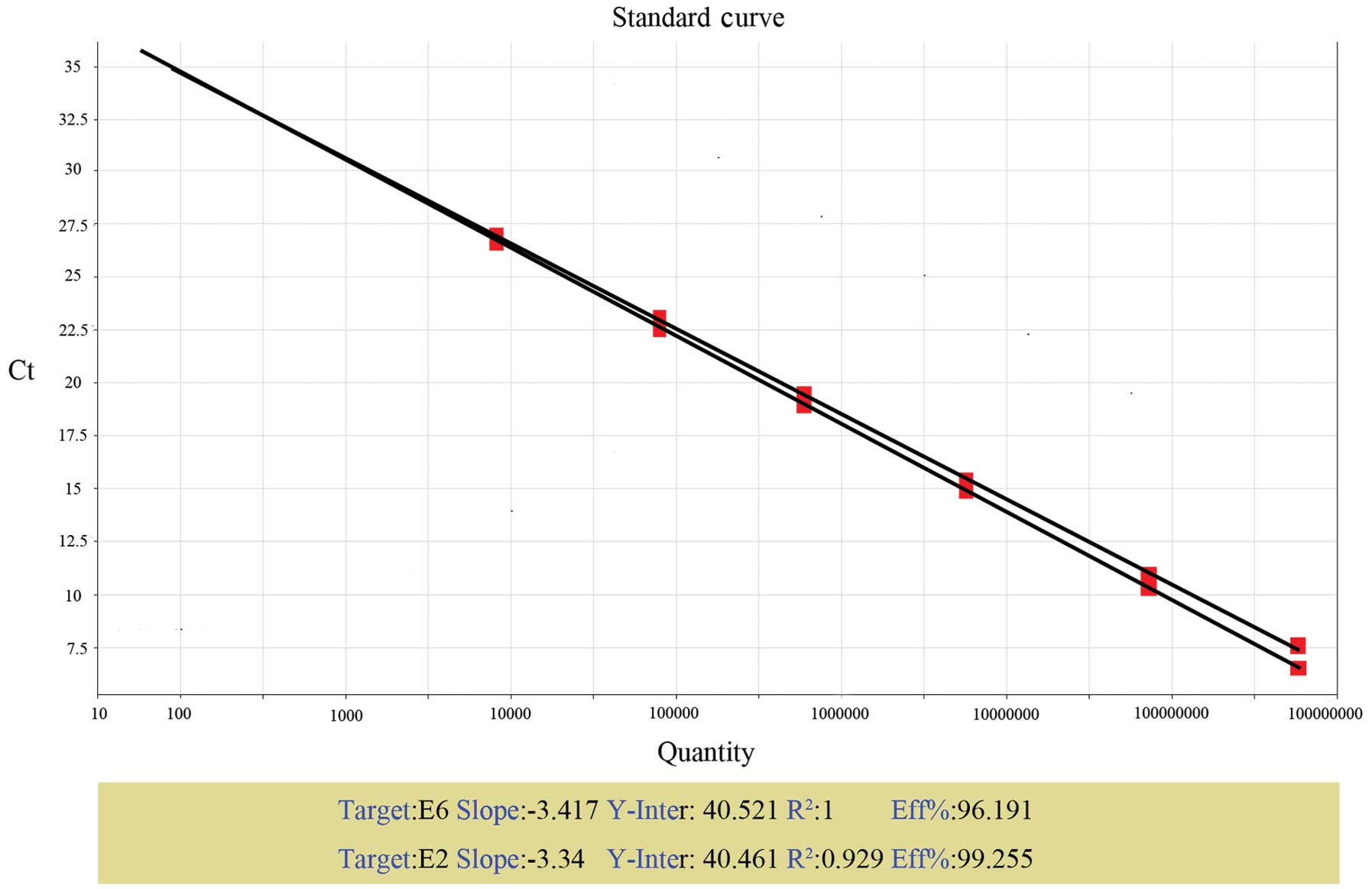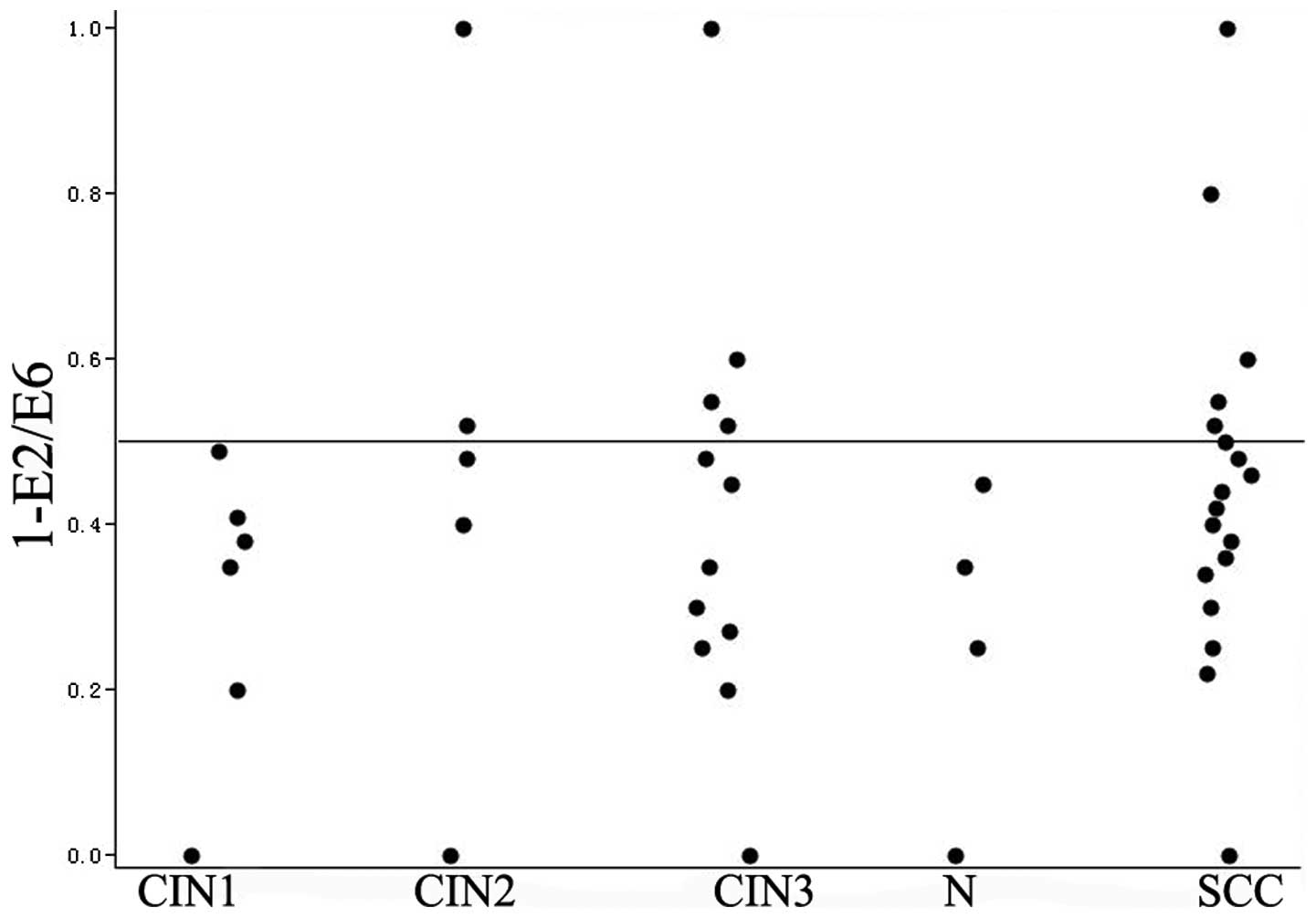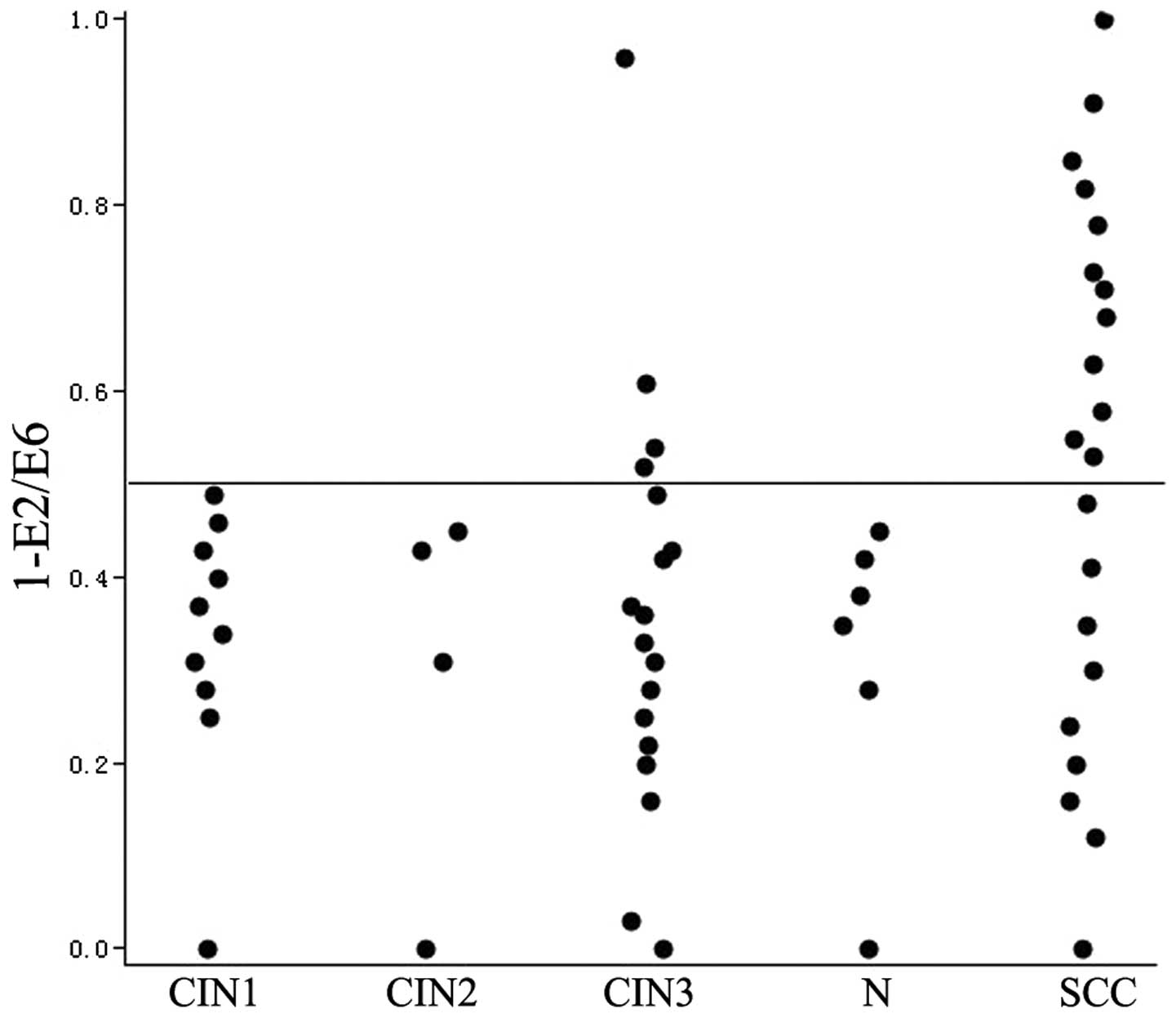|
1
|
Cornelison TL: Humanpapillomavirus
genotype 16 vaccine for cervical cancer prophylaxis and treatment.
Cirr Opin Oncol. 12:466–473. 2000. View Article : Google Scholar
|
|
2
|
Muñoz N, Bosch FX, de Sanjosé S, Herrero
R, Castellsagué X, Shah KV, Snijders PJ and Meijer CJ:
International Agency for Research on Cancer Multicenter Cervical
Cancer Study Group: Epidemiologic classification of human
papillomavirus types associated with cervical cancer. N Engl J Med.
348:518–527. 2003. View Article : Google Scholar : PubMed/NCBI
|
|
3
|
Pett M and Coleman N: Integration of
high-risk human papillomavirus: A key event in cervical
carcinogenesis? J Pathol. 212:356–367. 2007. View Article : Google Scholar : PubMed/NCBI
|
|
4
|
Jiang SQ, Tu SA, Zhou JL, Mai M, Bi J, Ru
X, Sha L, Xu X, Hai R and Ai M: Investigation and analysis of
gynecopathy in Cele county of Xinjiang, China. Zhongguo Fu You Bao
Jian. 21:524–526. 2006.(In Chinese).
|
|
5
|
Li N and Dai M: Human papillomavirus in
China: A multiple-centric cross sectional study. Zhonghua Ji Bing
Kong Zhi Za Zhi. 12:411–415. 2008.(In Chinese).
|
|
6
|
Li L, Pan Q, Liu XF, Wu YP, Qiao YL, Ma Y,
Chen F, Zhu K, Liu XW, RE Z, et al: A cross-sectional study: The
prevalence and distribution characteristic of HPV infection in
Uygur women in Xinjiang. Ai Zheng Jin Zhan. 2:114–118. 2010.(In
Chinese).
|
|
7
|
Li J, Li LK, Ma JF, Wei LH, Niyazi M, Li
CQ, Xu AD, Wang JB, Liang H, Belinson J and Qiao YL: Knowledge and
attitudes about human papillomavirus (HPV) and HPV vaccines among
women living in metropolitan and rural regions of China. Vaccine.
27:1210–1215. 2009. View Article : Google Scholar : PubMed/NCBI
|
|
8
|
Cricca M, Venturoli S, Leo E, Costa S,
Musiani M and Zerbini M: Disruption of HPV 16 E1 and E2 genes in
precancerous cervical lesions. J Virol Methods. 158:180–183. 2009.
View Article : Google Scholar : PubMed/NCBI
|
|
9
|
Li W, Wang W, Si M, Han L, Gao Q, Luo A,
Li Y, Lu Y, Wang S and Ma D: The physical state of HPV16 infection
and its clinical significance in cancer precursor lesion and
cervical carcinoma. J Cancer Res Clin Oncol. 134:1355–1361. 2008.
View Article : Google Scholar : PubMed/NCBI
|
|
10
|
Huang LW, Chao SL and Lee BH: Integration
of human papillomavirus type-16 and type-18 is a very early event
in cervical carcinogenesis. J Clin Pathol. 61:627–631. 2008.
View Article : Google Scholar : PubMed/NCBI
|
|
11
|
Matovina M, Sabol I, Grubisić G, Gasperov
NM and Grce M: Identification of human papillomavirus type 16
integration sites in high-grade precancerous cervical lesions.
Gynecol Oncol. 113:120–127. 2007. View Article : Google Scholar
|
|
12
|
Tinelli A, Vergara D, Leo G, Malvasi A,
Casciaro S, Leo E, Montinari MR, Maffia M, Marsigliante S and
Lorusso V: Human papillomavirus genital infection in modern
gynecology: Genetic and genomic aspects. Eur Clinics Obst Gynaecol.
3:1–6. 2007. View Article : Google Scholar
|
|
13
|
Arias-Pulido H, Peyton CL, Joste NE,
Vargas H and Wheeler CM: Human papillomavirus type 16 integration
in cervical carcinoma in situ and in invasive cervical cancer. J
Clin Microbiol. 44:1755–1762. 2006. View Article : Google Scholar : PubMed/NCBI
|
|
14
|
Bosch FX, Manos MM, Muñoz N, Sherman M,
Jansen AM, Peto J, Schiffman MH, Moreno V, Kurman R and Shah KV:
International Biological Study on Cervical Cancer (IBSCC) Study
Group: Prevalence of human papillomavirus in cervical cancer: A
worldwide perspective. J Natl Cancer Inst. 87:796–802. 1995.
View Article : Google Scholar : PubMed/NCBI
|
|
15
|
Pirami L, Giache V and Becciolini A:
Analysis of HPV 16, 18, 31 and 35 DNA in pre-invasive and invasive
lesions of the uterine cervix. J Clin Pathol. 50:600–604. 1997.
View Article : Google Scholar : PubMed/NCBI
|
|
16
|
Kalantari M, Blennow E, Hagmar B and
Johansson B: Physical state of HPV16 and chromosomal mapping of the
integrated form in cervical carcinomas. Diagn Mol Pathol. 10:46–54.
2001. View Article : Google Scholar : PubMed/NCBI
|
|
17
|
Kristiansen E, Jenkins A and Holm R:
Coexistence of episomal and integrated HPV16 DNA in squamous cell
carcinoma of the cervix. J Clin Pathol. 47:253–256. 1994.
View Article : Google Scholar : PubMed/NCBI
|
|
18
|
Park JS, Hwang ES, Park SN, Ahn HK, Um SJ,
Kim CJ, Kim SJ and Namkoong SE: Physical status and expression of
HPV genes in cervical cancers. Gynecol Oncol. 65:121–129. 1997.
View Article : Google Scholar : PubMed/NCBI
|
|
19
|
Dürst M, Kleinheinz A, Hotz M and Gissmann
L: The physical state of human papillomavirus type 16 DNA in benign
and malignant genital tumours. J Gen Virol. 66:1515–1522. 1985.
View Article : Google Scholar : PubMed/NCBI
|
|
20
|
Wu XX, Niyazi M, Zhu KC, et al: Status of
HPV16 infection in cervical lesions in Uygur women and its clinical
significance. Zhong Guo Zhong Liu. 21:394–397. 2012.(In
Chinese).
|
|
21
|
Zhang S, Cai HB and Ding XH: Different
deletion states of HPV16 E2 gene in C-terminal hinge region and
N-terminal in cervical lesions. Xiandai Fuchanke Jinzhan.
19:728–731. 2010.(In Chinese).
|
|
22
|
Saunier M, Monnier-Benoit S, Mauny F,
Dalstein V, Briolat J, Riethmuller D, Kantelip B, Schwarz E, Mougin
C and Prétet JL: Analysis of human papillomavirus type 16 (HPV16)
DNA load and physical state for identification of hpv16-infected
women with high-grade lesions or cervical carcinoma. J Clin
Microbiol. 11:3678–3685. 2008. View Article : Google Scholar
|
|
23
|
Sathish N, Abraham P, Sridharan G, Shaji
RV, Chandy G and Peedicayil A: E2 sequence variations of HPV 16
among patients with cervical neoplasia seen in the Indian
subcontinent. Gynecol Oncol. 95:363–369. 2004. View Article : Google Scholar : PubMed/NCBI
|
|
24
|
Liu KJ, Liu Q and Tang HF: Study on
genotypes of human papilloma virus infected Uigur and Han women
with cervical cancer and their relationships with TERC gene
amplification. Zhongguo Fuchanke Linchuang Zazhi. 6:449–452.
2008.(In Chinese).
|
|
25
|
Li HH: The study on the corralation
between cervical cancer and HPV DNA integration, E2 disruption,
ratio of HPV E2/E6. Zhongguo Mian Yi Xue Za Zhi. 26:670–673.
2010.(In Chinese).
|
|
26
|
Li Li, Mayinuer Niyazi, Wenhua Zhang, et
al: A cross-section population study on different cervical cancer
screening methods in uygur women of xinjiang. Zhongguo Zhongliu.
19:238–242. 2010.(In Chinese).
|
|
27
|
Zheng Y, Peng ZL, Lou JY and Wang H:
Detection of HPV16 integration status in preinvasive and invasive
cervical carcinoma. Zhongguo Kang Ai Xie Hui. 33:961–964. 2006.(In
Chinese).
|
|
28
|
Shi YM, Ye H, Xiao CY, Chen JL, Wang YQ
and Wu JF: Change and significance of HPV integrated state in
cervical lesions. Shandong Yi Yao. 49:1–3. 2009.
|
|
29
|
Li KZ, Jin Z, Fang Y, Ai JH, et al: Study
on the correlation between integrated state of HPV-16 and the
occurrence of cervical cancer. Zhongguo Fu You Bao Jian.
26:4241–4244. 2011.(In Chinese).
|

















